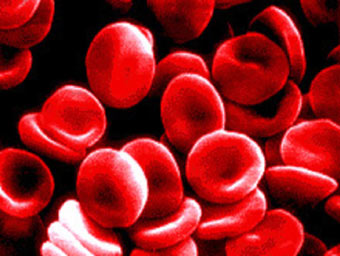Magazines, movies, and all different kinds of media have led women to believe that the weight as low as 45kg, is the ideal weight for any woman. Skinny, anorexic models, flaunting their bones on the runway, dig that image deeper into our minds. So, we fret about having any flesh on our bones and starve ourselves to such a point that it all backfires, and we end up trapped in the vicious cycle of dieting.
Very few women stop to think of the ideal weight for their own body. Women's bodies vary substantially, as each woman has her own body shape, bone structure and body proportions. When a weight is stated as ideal for all women, those vast differences are completely disregarded.
So, instead of spending most of our lives trying to force our bodies into something they're not, smothering our individuality and God-given beauty in the process, we should embrace our body's uniqueness, by finding out about the healthy weight, at which each of us looks her best.
Women must keep in mind that how much they weigh on the scale is a very poor indicator of whether or not they are overweight. Because scale measurement does not take into account many factors affecting weight such as frame size, bone structure, body type, and genetics, which doesn't indicate fat as a percentage of our body constituents.
The amount of fat you carry as a percentage of your total body composition is the most critical and accurate measurement. There are many ways to measure fat amount. One way is to use the Body Mass Index (BMI) method. To measure BMI, first you should take your weight in kg (your weight number), and then you should square your height in meters, (your height number). Finally divide your weight number by your height number to get the BMI - (BMI = kg\m2). A BMI under 18.5 is underweight, between 18.5 and 24.9 is healthy, between 25 and 29.9 is overweight, and over 30 is obese. 40 or above is extreme obesity. Between 18.5 and 24.9, the healthy BMI, the risk of disease is lowest.
The more the BMI exceeds 25, the higher the risk of uterine and breast disease, cancers, diabetes, arthritis and heart disease. On the other hand, low BMI leads to depression, chronic fatigue, eating disorders and anemia.
Therefore the goal should be to maintain a healthy weight, at which BMI is within a healthy range. However, this method does not apply to children, pregnant or lactating women, elderly or muscular athletes. For example, athletes have heavier bones and so a high BMI, though they have very little fat.
Another method available is the waist-circumference method. To obtain it, measure around a person's natural waist, just above the navel. For women, a waistline above 88cm is high risk, and for men a high-risk waistline is above 102cm.
A third measure of body fat is the waist-hip ratio (WHR). This is indicates whether a person is carrying excess weight in a dangerous way. To get this figure, measure the smallest part of your waistline and measure your hips at the largest point. Then divide the waist measurement by the hip measurement. The healthy measure for women is 0.80 or below and 1.00 or below for men. Anything higher involves higher health risks.
Where the fat in your body is carried is very much linked to your body shape and has significant effects on your health. Women who are apple-shaped put on weight above the waist and have a very high risk of developing critical health problems such as heart disease and strokes, high blood pressure, diabetes and high blood cholesterol. Women, who are pear-shaped, gain weight below the waist and are at less risk of developing the above-mentioned diseases.
Therefore instead of worrying about being as skinny as bony models, direct your efforts towards achieving and maintaining the healthiest weight for you. That's the weight at which you have the most energy, can exercise regularly and enjoy good health and normal cholesterol and blood pressure levels. In short, it's the weight at which you feel absolutely fantastic about yourself and most comfortable with your body. What more can woman want?
 Apparently a lot. I have O- blood type which is the universal donor. I read my supposed diet and found to some strange degree that foods that are supposed to be good for me, I actually liked. Those that were bad for me, sometimes I didn't like but could eat.
Apparently a lot. I have O- blood type which is the universal donor. I read my supposed diet and found to some strange degree that foods that are supposed to be good for me, I actually liked. Those that were bad for me, sometimes I didn't like but could eat. 
